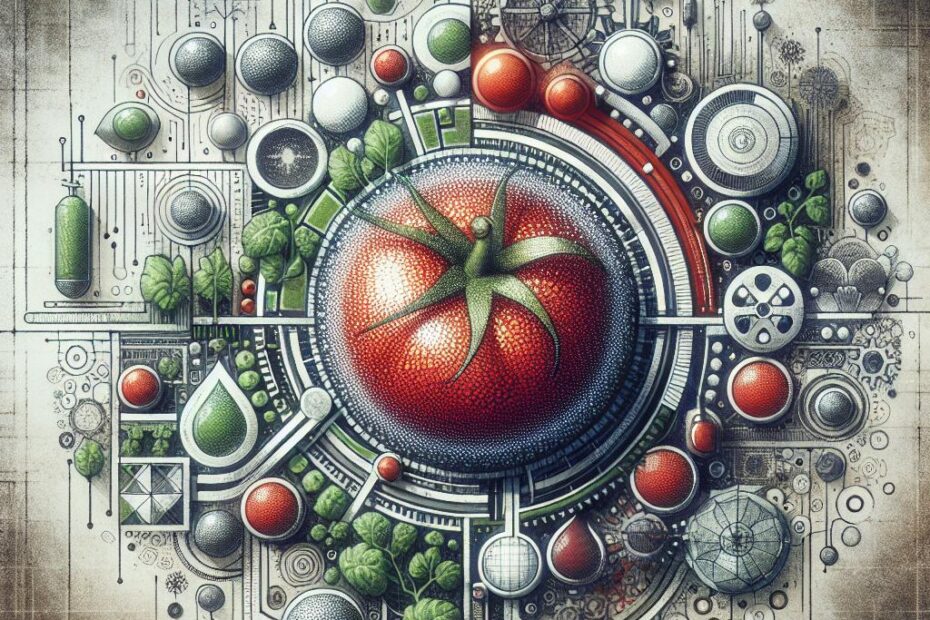Tomato Nitrogen Burn: Causes, Symptoms, and Treatment
Introductory Section:
Tomatoes are a popular vegetable in gardens and farms worldwide, but sometimes they can suffer from a condition known as nitrogen burn. This issue occurs when tomato plants receive too much nitrogen, leading to harmful effects on their growth and development. In this article, we will explore the causes, symptoms, and treatment of tomato nitrogen burn, as well as provide practical tips for preventing this problem in your garden.
Causes of Tomato Nitrogen Burn:
Nitrogen is an essential nutrient for plant growth, but an excess of this element can lead to nitrogen burn in tomato plants. There are several common causes of nitrogen burn in tomatoes, including:
- Over-Application of Fertilizer: Using too much nitrogen-rich fertilizer can overwhelm tomato plants with this nutrient, leading to nitrogen burn.
- Soil Imbalance: Soil that is high in nitrogen naturally or has been previously treated with nitrogen-rich fertilizers can also contribute to nitrogen burn in tomatoes.
- Organic Matter Decomposition: As organic matter breaks down in the soil, it releases nitrogen, which can be absorbed in excess by tomato plants if not properly managed.
Symptoms of Tomato Nitrogen Burn:
Recognizing the symptoms of tomato nitrogen burn is crucial for addressing this issue before it causes long-term damage to your plants. Common signs of nitrogen burn in tomato plants include:
- Wilting or Yellowing Leaves: Tomato plants affected by nitrogen burn may exhibit wilting or yellowing leaves, starting from the bottom of the plant and moving upwards.
- Stunted Growth: Excessive nitrogen can stunt the growth of tomato plants, leading to smaller fruits and overall reduced yield.
- Root Damage: In severe cases of nitrogen burn, the roots of tomato plants may show signs of damage, such as browning or rotting.
- Blossom End Rot: High levels of nitrogen can disrupt the calcium uptake in tomato plants, resulting in blossom end rot on the fruits.
Treatment of Tomato Nitrogen Burn:
If you suspect that your tomato plants are suffering from nitrogen burn, there are several steps you can take to remedy the situation and prevent further damage:
- Stop Fertilizer Application: Cease using nitrogen-rich fertilizers on your tomato plants and switch to a balanced fertilizer or organic alternatives.
- Watering: Ensure that your tomato plants are receiving adequate water to help flush out excess nitrogen from the soil.
- Soil Testing: Conduct a soil test to determine the nutrient levels in your garden and make adjustments as needed to prevent future nitrogen burn.
- Mulching: Mulching around tomato plants can help regulate soil temperature and moisture levels, reducing the risk of nitrogen burn.
Benefits and Practical Tips to Prevent Tomato Nitrogen Burn:
To prevent tomato nitrogen burn in your garden, consider the following practical tips and benefits:
- Use a balanced fertilizer with equal parts nitrogen, phosphorus, and potassium to avoid nutrient imbalances.
- Rotate your crops regularly to prevent soil depletion and nutrient imbalances.
- Practice companion planting with nitrogen-fixing plants like legumes to naturally replenish soil nitrogen levels.
- Monitor your tomato plants regularly for signs of nutrient deficiencies or excesses to address issues promptly.
Case Study:
John, a tomato gardener, noticed yellowing leaves on his plants and suspected nitrogen burn. After switching to a balanced fertilizer and adjusting his watering schedule, John was able to save his tomatoes and enjoy a bountiful harvest.
Conclusion:
Tomato nitrogen burn can be a serious issue for gardeners, but with proper care and attention, it can be effectively managed and prevented. By understanding the causes, symptoms, and treatment of nitrogen burn in tomato plants, you can ensure the health and productivity of your garden. Remember to monitor your plants regularly, use balanced fertilizers, and practice good soil management techniques to keep your tomatoes thriving all season long.
Overall, tomato nitrogen burn is a common problem that can be easily addressed with the right knowledge and action. By following the tips and guidelines provided in this article, you can protect your tomato plants from the harmful effects of excess nitrogen and enjoy a successful harvest.
